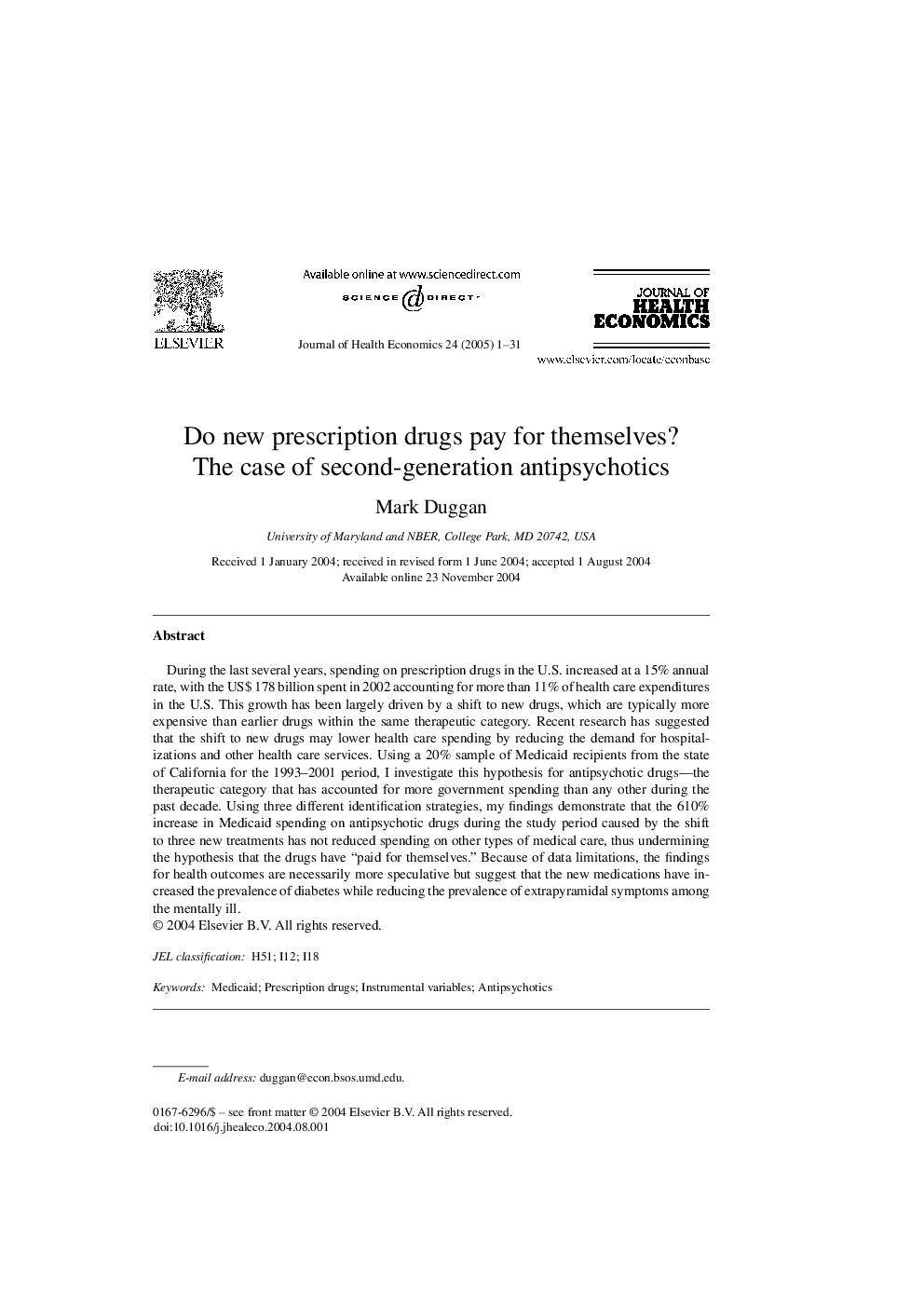| Article ID | Journal | Published Year | Pages | File Type |
|---|---|---|---|---|
| 10476814 | Journal of Health Economics | 2005 | 31 Pages |
Abstract
During the last several years, spending on prescription drugs in the U.S. increased at a 15% annual rate, with the US$ 178 billion spent in 2002 accounting for more than 11% of health care expenditures in the U.S. This growth has been largely driven by a shift to new drugs, which are typically more expensive than earlier drugs within the same therapeutic category. Recent research has suggested that the shift to new drugs may lower health care spending by reducing the demand for hospitalizations and other health care services. Using a 20% sample of Medicaid recipients from the state of California for the 1993-2001 period, I investigate this hypothesis for antipsychotic drugs-the therapeutic category that has accounted for more government spending than any other during the past decade. Using three different identification strategies, my findings demonstrate that the 610% increase in Medicaid spending on antipsychotic drugs during the study period caused by the shift to three new treatments has not reduced spending on other types of medical care, thus undermining the hypothesis that the drugs have “paid for themselves.” Because of data limitations, the findings for health outcomes are necessarily more speculative but suggest that the new medications have increased the prevalence of diabetes while reducing the prevalence of extrapyramidal symptoms among the mentally ill.
Related Topics
Health Sciences
Medicine and Dentistry
Public Health and Health Policy
Authors
Mark Duggan,
